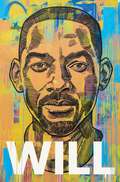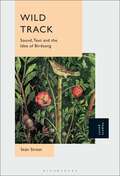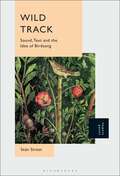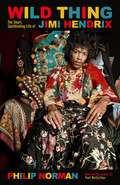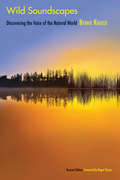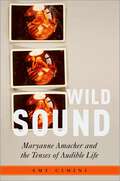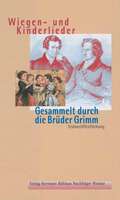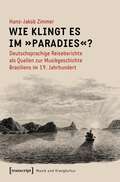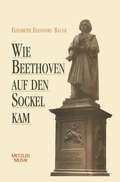- Table View
- List View
Will Oldham on Bonnie 'Prince' Billy
by Alan Licht Will OldhamW - Sweeney called me and said that Johnny Cash just recorded ' I See A Darkness.' We had a Bowery Ballroom show a week or two later, and he invited Rick Rubin to come to the show; he came to the show . . . and asked if I wanted to play piano on the song.A - Which you agreed to do despite not knowing how to play piano.W - Yes . . .A man who acts under the name Will Oldham and a singer-songwriter who performs under the name Bonnie Prince Billy has, over the past quarter of a century, made an idiosyncratic journey through, and an indelible mark on, the worlds of indie rock and independent cinema, intersecting with such disparate figures as Johnny Cash, Björk, James Earl Jones, and R. Kelly along the way. These conversations with longtime friend and associate Alan Licht probe his highly individualistic approach to music making and the music industry, one that cherishes notions of intimacy, community, mystery, and spontaneity.
Will: The Sunday Times Bestselling Autobiography
by Will Smith Mark MansonThe Instant Sunday Times BestsellerThe Instant #1 New York Times BestsellerPRAISE FOR WILL'The best memoir I ever read' Oprah Winfrey'If you read one book this year, make it this one' Jay Shetty'Incredible' Idris Elba'The book is awesome. So candid and considered...fascinating' Chris Evans'A triumph...really inspiring, so well written, vulnerable and deep. I highly recommend it' Mindy Kaling'It's fantastic...very moving' Zoe Ball'Incredibly honest...inspiring' Greg James'A wild ride' New York Times'Raw, comedic, inspirational' GQOne of the most dynamic and globally recognized entertainment forces of our time opens up fully about his life, in a brave and inspiring book that traces his learning curve to a place where outer success, inner happiness, and human connection are aligned. Along the way, Will tells the story in full of one of the most amazing rides through the worlds of music and film that anyone has ever had.Will Smith's transformation from a fearful child in a tense West Philadelphia home to one of the biggest rap stars of his era and then one of the biggest movie stars in Hollywood history, with a string of box office successes that will likely never be broken, is an epic tale of inner transformation and outer triumph, and Will tells it astonishingly well. But it's only half the story. Will Smith thought, with good reason, that he had won at life: not only was his own success unparalleled, his whole family was at the pinnacle of the entertainment world. Only they didn't see it that way: they felt more like star performers in his circus, a seven-days-a-week job they hadn't signed up for. It turned out Will Smith's education wasn't nearly over. This memoir is the product of a profound journey of self-knowledge, a reckoning with all that your will can get you and all that it can leave behind. Written with the help of Mark Manson, author of the multi-million-copy bestseller The Subtle Art of Not Giving a F*ck, Will is the story of how one exceptional man mastered his own emotions, written in a way that can help everyone else do the same. Few of us will know the pressure of performing on the world's biggest stages for the highest of stakes, but we can all understand that the fuel that works for one stage of our journey might have to be changed if we want to make it all the way home. The combination of genuine wisdom of universal value and a life story that is preposterously entertaining, even astonishing, puts Will the book, like its author, in a category by itself.'Bracingly honest, vivid and compelling ... how an average talent became the biggest movie star in the world' The Times'The Hollywood star's autobiography is full of indiscretions, drug-fuelled escapades and terrible parenting. Who could ask for more?' Telegraph'It's not every day a Hollywood A-lister like Will Smith writes his life story - and there are certainly some eye-popping revelations' Sun'Candid ... digs into the life events which fine-tuned Smith's weapons-grade charisma and steely determination' Observer'I absolutely loved it...no holds barred...I felt as if Will Smith was talking to me. It's a testament to him and to his family' Lorraine Kelly
WILDE NOW: Performance, Celebrity and Intermediality in Oscar Wilde (Palgrave Studies in Music and Literature)
by Pierpaolo MartinoWILDE NOWreads Oscar Wilde through our now, through a contemporary sensibility (and approach), in which literature and popular culture interrogate and are interrogated by critical concepts and categories such as performance, celebrity, intermediality, and consumerism. This volume exceeds the shape and meaning of a critical study to turn into a drama of five different acts/moments in Wilde’s life and work: his early performances in Dublin, London and Oxford; the 1882 American tour; his successful season of the first half of the 1890s, his prison years and finally his glorious resurrection in contemporary pop culture. Most importantly WILDE NOW approaches these moments through contemporary rewritings and performances of “Oscar Wilde” in the fields of cinema, music and literature by such artists as Al Pacino, Rupert Everett, Stephen Fry, Gyles Brandreth, David Hare, David Bowie, Morrissey, Nick Cave, Neil Tennant, Gavin Friday. These artists – through their awareness of the importance of being/playing Oscar in their specific worlds and cultural contexts – will also show us that Wilde can be conceived as a subversive, critical role one might successfully perform and appropriate, now more than ever.
Wild Track: Sound, Text and the Idea of Birdsong
by Seán StreetWild Track is an exploration of birdsong and the ways in which that sound was conveyed, described and responded to through text, prior to the advent of recording and broadcast technologies in the late 19th and early 20th centuries. Street links sound aesthetics, radio, natural history, and literature to explore how the brain and imagination translate sonic codes as well as the nature of the silent sound we "hear" when we read a text. This creates an awareness of sound through the tuned attention of the senses, learning from sound texts of the natural world that sought – and seek – to convey the intensity of the sonic moment and fleeting experience. To absorb these lessons is to enable a more highly interactive relationship with sound and listening, and to interpret the subtleties of audio as a means of expression and translation of the living world.
Wild Track: Sound, Text and the Idea of Birdsong
by Seán StreetWild Track is an exploration of birdsong and the ways in which that sound was conveyed, described and responded to through text, prior to the advent of recording and broadcast technologies in the late 19th and early 20th centuries. Street links sound aesthetics, radio, natural history, and literature to explore how the brain and imagination translate sonic codes as well as the nature of the silent sound we "hear" when we read a text. This creates an awareness of sound through the tuned attention of the senses, learning from sound texts of the natural world that sought – and seek – to convey the intensity of the sonic moment and fleeting experience. To absorb these lessons is to enable a more highly interactive relationship with sound and listening, and to interpret the subtleties of audio as a means of expression and translation of the living world.
Wild Thing: The short, spellbinding life of Jimi Hendrix
by Philip NormanAlmost 50 years after his lonely death, Hendrix is the abiding symbol of musical genius cut tragically short. Wild Thing will be the first biography to bring together the splendour and sadness of his brief life, and to attempt to unravel the circumstances of his death. Hendrix revolutionised classic rock, inventing a whole new vocabulary for the guitar. Onstage he pushed the boundaries of Sixties permissiveness, fellating the strings of the guitar with his tongue, lying it flat and straddling it, even setting fire to it. Yet in private he was polite, shy and sweet-natured. Norman will explore these contradictions in a narrative that takes us from Hendrix's roots in Seattle to his louche and glamorous life in Mayfair, when London was the world's most 'swinging' capital and then back to the US with the series of historic outdoor rock festivals that rounded out the decade. Wild Thing will be a celebration of matchless artistry, and a gripping chronicle of those now mythical times. But it will also investigate the peculiar conditions of his death, part whodunnit as it tells the most cautionary of rock 'n' roll parables. After all these years of rumour and speculation, Jimi's ghost may finally be laid to rest.
The Wild Tchoupitoulas’ The Wild Tchoupitoulas (33 1/3)
by Bryan WagnerThe Wild Tchoupitoulas is a definitive expression of the modern New Orleans sound. From "Hey Pocky A-Way" to "Big Chief Got a Golden Crown," the album draws on carnival traditions stretching back a century, adapting songs from the Mardi Gras Indians. Music chanted in the streets with tambourines and makeshift percussion is transformed throughout the album into electric rhythm and blues accented funk, calypso, and reggae. The album bridges not only genres but generations, linking the improvised flow from group leader George Landry, better known as Big Chief Jolly, to the stacked harmony vocals by his nephews Aaron, Art, Charles, and Cyril--the core members of the soon-to-be-formed Neville Brothers, playing together here for the first time.With production from Allen Toussaint and support from The Meters, the city's preeminent funk ensemble, The Wild Tchoupitoulas brings an all-star brigade, pressing these old anthems into new arrangements that have since become carnival standards. In the process, the album helped to establish the terms by which processional second-line music in New Orleans would be commercialized through the record industry and the tourist trade, setting into motion a process that has raised more questions than it has answered about autonomy, authenticity, and appropriation under the conditions of a new cultural economy.
The Wild Tchoupitoulas’ The Wild Tchoupitoulas (33 1/3 #142)
by Bryan WagnerThe Wild Tchoupitoulas is a definitive expression of the modern New Orleans sound. From "Hey Pocky A-Way" to "Big Chief Got a Golden Crown," the album draws on carnival traditions stretching back a century, adapting songs from the Mardi Gras Indians. Music chanted in the streets with tambourines and makeshift percussion is transformed throughout the album into electric rhythm and blues accented funk, calypso, and reggae. The album bridges not only genres but generations, linking the improvised flow from group leader George Landry, better known as Big Chief Jolly, to the stacked harmony vocals by his nephews Aaron, Art, Charles, and Cyril--the core members of the soon-to-be-formed Neville Brothers, playing together here for the first time.With production from Allen Toussaint and support from The Meters, the city's preeminent funk ensemble, The Wild Tchoupitoulas brings an all-star brigade, pressing these old anthems into new arrangements that have since become carnival standards. In the process, the album helped to establish the terms by which processional second-line music in New Orleans would be commercialized through the record industry and the tourist trade, setting into motion a process that has raised more questions than it has answered about autonomy, authenticity, and appropriation under the conditions of a new cultural economy.
Wild Soundscapes: Discovering the Voice of the Natural World, Revised Edition (The\future Ser.)
by Bernie KrauseThrough his organization Wild Sanctuary, Bernie Krause has traveled the globe to hear and record the sounds of diverse natural habitats. Wild Soundscapes, first published in 2002, inspires readers to follow in Krause’s footsteps. The book enchantingly shows how to find creature symphonies (or, as Krause calls them, “biophonies”); use simple microphones to hear more; and record, mix, and create new expressions with the gathered sounds. After reading this book, readers will feel compelled to investigate a wide range of habitats and animal sounds, from the conversations of birds and howling sand dunes to singing anthills. This rewritten and updated edition explains the newest technological advances and research, encouraging readers to understand the earth’s soundscapes in ways previously unimaginable. With links to the sounds that are discussed in the text, this accessible and engaging guide to natural soundscapes will captivate amateur naturalists, field recordists, musicians, and anyone else who wants to fully appreciate the sounds of our natural world.
Wild Sound: Maryanne Amacher and the Tenses of Audible Life (Critical Conjunctures in Music and Sound)
by Amy Cimini"We haven't even made it to breakfast!" was a phrase often used by composer Maryanne Amacher (1938-2009) to shorthand her critical and partial approach to knowledge production across the vast artistic, technical, and scientific discourses with which she worked. The same could be said about her own musical thought, which encompassed original presentational formats in existing and speculative media and approaches to sound and listening that conjoined real and imagined social worlds. Wild Sound: Maryanne Amacher and the Tenses of Audible Life discerns meeting points between frameworks for life that emerged from Amacher's multidisciplinary study of sound and listening: within acoustical spectra, inside human bodies and ears, across cities and edgleands, hypothetical creatures and virtual, fictive or distanciated environments. These figurations guide interpretative study of six signal projects: Adjacencies (1965/1966); City-Links (1967-1988); Additional Tones (1976 / 1988), Music for Sound-Joined Rooms (1980), Mini Sound Series (1985) and Intelligent Life (1980s) and countless sketches, notes and unrealized projects. Author Amy Cimini explores Amacher's working methods with an interpretive style that emphasizes technical study, conceptual juxtaposition, intertextual play, and narrative transport.
Wild Sound: Maryanne Amacher and the Tenses of Audible Life (Critical Conjunctures in Music and Sound)
by Amy Cimini"We haven't even made it to breakfast!" was a phrase often used by composer Maryanne Amacher (1938-2009) to shorthand her critical and partial approach to knowledge production across the vast artistic, technical, and scientific discourses with which she worked. The same could be said about her own musical thought, which encompassed original presentational formats in existing and speculative media and approaches to sound and listening that conjoined real and imagined social worlds. Wild Sound: Maryanne Amacher and the Tenses of Audible Life discerns meeting points between frameworks for life that emerged from Amacher's multidisciplinary study of sound and listening: within acoustical spectra, inside human bodies and ears, across cities and edgleands, hypothetical creatures and virtual, fictive or distanciated environments. These figurations guide interpretative study of six signal projects: Adjacencies (1965/1966); City-Links (1967-1988); Additional Tones (1976 / 1988), Music for Sound-Joined Rooms (1980), Mini Sound Series (1985) and Intelligent Life (1980s) and countless sketches, notes and unrealized projects. Author Amy Cimini explores Amacher's working methods with an interpretive style that emphasizes technical study, conceptual juxtaposition, intertextual play, and narrative transport.
Wild colonial boys: A Belfast punk story
by Thomas Paul BurgessRuefrex were one of Northern Ireland’s most popular and uncompromising punk rock bands.Emerging from the Belfast street-gang culture of the late-1970s, the group, inspired by The Clash, enjoyed a turbulent, decade-long career. They played for millions on CNN and Channel 4, toured with The Pogues and recorded the controversial ‘The Wild Colonial Boy’, which attacked American donations to Northern Irish terrorist organisations.Throughout it all, founder member, songwriter and spokesperson Thomas Paul Burgess ensured the band remained faithful to their Protestant, working-class origins. This candid memoir takes us on a journey from the streets of Belfast to encounters with U2, Shane MacGowan, The Cure, The Fall and Seamus Heaney.From strife-torn 1970s Belfast to bohemian London, Wild colonial boys tells the story of a punk band who refused to give up and stayed true to their punk roots.
Wild colonial boys: A Belfast punk story
by Thomas Paul BurgessRuefrex were one of Northern Ireland’s most popular and uncompromising punk rock bands.Emerging from the Belfast street-gang culture of the late-1970s, the group, inspired by The Clash, enjoyed a turbulent, decade-long career. They played for millions on CNN and Channel 4, toured with The Pogues and recorded the controversial ‘The Wild Colonial Boy’, which attacked American donations to Northern Irish terrorist organisations.Throughout it all, founder member, songwriter and spokesperson Thomas Paul Burgess ensured the band remained faithful to their Protestant, working-class origins. This candid memoir takes us on a journey from the streets of Belfast to encounters with U2, Shane MacGowan, The Cure, The Fall and Seamus Heaney.From strife-torn 1970s Belfast to bohemian London, Wild colonial boys tells the story of a punk band who refused to give up and stayed true to their punk roots.
Wiegen-und Kinderlieder: Gesammelt durch die Brüder Grimm
by Heinz Rölleke Jacob und GrimmEine aufsehenerregende Trouvaille: Zum ersten Mal werden die von den Brüdern Grimm zwischen 1807 und 1830 gesammelten Wiegen- und Kinderlieder in einer umfassend kommentierten, mit zeitgenössischen Illustrationen ausgestatteten Ausgabe der Öffentlichkeit zugänglich gemacht.
Wiederholung als zentrales universelles Gestaltungsmittel der Musik (Zeitgenössische Musikwissenschaft)
by Ulli GötteIm Zentrum des Buches steht die Betrachtung der Wiederholung in ihren vielfältigen, kulturübergreifenden Erscheinungsformen. Zahlreiche Analysen aus den Bereichen der abendländischen Kunstmusik, der europäischen Volksmusik, der afrikanischen, indonesischen und indischen Musik sowie der populären Musik untermauern die einzigartige Bedeutung der Wiederholung als musikalisches Gestaltungsmittel. Die europäische Theorie der musikalischen Form, mathematische Betrachtungen, Minimal Music (als Inbegriff repetitiver Musik) sowie ästhetische Überlegungen werden in einzelnen Kapiteln behandelt. Eine Systematisierung der Wiederholungsstrukturen steht am Ende des Buches. Entsprechend dieser Bedeutung wird die Schrift eingeleitet mit einer streifzugartigen Darstellung der Wiederholung als einer universellen, kunstspartenübergreifenden Strategie.
Wie klingt es im »Paradies«?: Deutschsprachige Reiseberichte als Quellen zur Musikgeschichte Brasiliens im 19. Jahrhundert (Musik und Klangkultur #38)
by Hans-Jakob ZimmerReiseberichten eilt in der Musikforschung ein ambivalenter Ruf voraus: Mitunter kategorisch abgelehnt als ernst zu nehmende Quellen, bergen sie gleichwohl häufig einzigartige Informationen zur musikalischen Frühgeschichte von Ethnien und Ländern. Darüber hinaus erweisen sie sich als wertvolle mentalitätsgeschichtliche Dokumente ihrer Autor_innen. Hans-Jakob Zimmer unternimmt die bislang umfangreichste Auswertung deutschsprachiger Reiseberichte im Hinblick auf das Musikleben des Landes Brasilien, welches nach der Umsiedlung des portugiesischen Königshofs nach Rio de Janeiro im Jahr 1808 zu einem Sehnsuchtsort für Naturforscher, Reisende und Auswanderer avancierte.
Wie klingt die globale Ordnung: Die Entstehung eines Marktes für World Music (Musik und Medien)
by Glaucia Peres da SilvaGlaucia Peres da Silva analysiert „World Music“ im Spannungsfeld zwischen Kultur und Markt. Anhand einer kultursoziologisch ansetzenden Marktsoziologie macht die Autorin deutlich, dass die Konstruktion eines Musikgenres eine konstitutive Bedingung für die Entstehung und Stabilisierung eines Musikmarktes ist. Insbesondere wird das Ineinandergreifen von Ästhetik und Markt untersucht. Durch diese Analyse zeigt die Autorin zudem, wie die lokale Herstellung von „World Music“ ihre Globalität möglich macht.
»Wie ein Begehren«: Sprache und Musik in der Interpretation von Vokalmusik (nicht nur) des Fin de Siècle (Musik und Klangkultur #28)
by Bartolo MusilSprache und Musik begegnen einander im singenden Körper. Besonders eng verwoben sind sie in Kunstlied und mélodie um 1900: Dies bildet den Ausgangspunkt für eine Systematik von beispielhaften Stimmgebungen zwischen Sprechen und Singen, die einen Bogen von der Theaterdeklamation bis hin zur Vokalise spannen. Bartolo Musil zeigt, wie Komposition und Interpretation, Gesangstechnik und Hermeneutik, Sprachgestaltung und musikalische Phrasierung dabei in einen Dialog eintreten, und erzählt das schillernde und prekäre Miteinander von Wort und Ton in gesungener Kunstmusik neu - als Liebesgeschichte zwischen Hingabe, Verschmelzung, lustvoller Differenz, Abstoßung und Selbstbehauptung.
Wie Beethoven auf den Sockel kam: Die Entstehung eines musikalischen Mythos
by Elisabeth Eleonore BauerThe Wichita Lineman: Searching in the Sun for the World's Greatest Unfinished Song
by Dylan Jones'It's just another song to me. I've written 1,000 of them and it's really just another one.' Jimmy Webb 'When I heard it I cried. It made me cry because I was homesick. It's just a masterfully written song.' Glen CampbellThe sound of 'Wichita Lineman' was the sound of ecstatic solitude, but then its hero was the quintessential loner. What a great metaphor he was: a man who needed a woman more than he actually wanted her. Written in 1968 by Jimmy Webb, 'Wichita Lineman' is the first philosophical country song: a heartbreaking torch ballad still celebrated for its mercurial songwriting genius fifty years later. It was recorded by Glen Campbell in LA with a legendary group of musicians known as 'the Wrecking Crew', and something about the song's enigmatic mood seemed to capture the tensions in America at a moment of crisis. Fusing a dribble of bass, searing strings, tremolo guitar and Campbell's plaintive vocals, Webb's paean to the American West describes a telephone lineman's longing for an absent lover, who he hears 'singing in the wire' - and like all good love songs, it's an SOS from the heart. Mixing close-listening, interviews and travelogue, Dylan Jones explores the legacy of a record that has entertained and haunted millions for over half a century. What is it about this song that continues to seduce listeners, and how did the parallel stories of Campbell and Webb - songwriters and recording artists from different ends of the spectrum - unfold in the decades following? Part biography, part work of musicological archaeology, The Wichita Lineman opens a window on to America in the late-twentieth century through the prism of a song that has been covered by myriad artists in the intervening decades.'Americana in the truest sense: evocative and real.' Bob Stanley
Why You Hear What You Hear: An Experiential Approach to Sound, Music, and Psychoacoustics
by Eric J. HellerWhy You Hear What You Hear is the first book on the physics of sound for the nonspecialist to empower readers with a hands-on, ears-open approach that includes production, analysis, and perception of sound. The book makes possible a deep intuitive understanding of many aspects of sound, as opposed to the usual approach of mere description. This goal is aided by hundreds of original illustrations and examples, many of which the reader can reproduce and adjust using the same tools used by the author (e.g., very accessible applets for PC and Mac, and interactive web-based examples, simulations, and analysis tools will be found on the book's website: whyyouhearwhatyouhear.com.) Readers are positioned to build intuition by participating in discovery. This truly progressive introduction to sound engages and informs amateur and professional musicians, performers, teachers, sound engineers, students of many stripes, and indeed anyone interested in the auditory world. The book does not hesitate to follow entertaining and sometimes controversial side trips into the history and world of acoustics, reinforcing key concepts. You will discover how musical instruments really work, how pitch is perceived, and how sound can be amplified with no external power source. Sound is key to our lives, and is the most accessible portal to the vibratory universe. This book takes you there. The first book on sound to offer interactive tools, building conceptual understanding via an experiential approach Supplementary website (http://www.whyyouhearwhatyouhear.com) will provide Java, MAX, and other free, multiplatform, interactive graphical and sound applets Extensive selection of original exercises available on the web with solutions Nearly 400 full-color illustrations, many of simulations that students can do
Why You Hear What You Hear: An Experiential Approach to Sound, Music, and Psychoacoustics
by Eric J. HellerWhy You Hear What You Hear is the first book on the physics of sound for the nonspecialist to empower readers with a hands-on, ears-open approach that includes production, analysis, and perception of sound. The book makes possible a deep intuitive understanding of many aspects of sound, as opposed to the usual approach of mere description. This goal is aided by hundreds of original illustrations and examples, many of which the reader can reproduce and adjust using the same tools used by the author (e.g., very accessible applets for PC and Mac, and interactive web-based examples, simulations, and analysis tools will be found on the book's website: whyyouhearwhatyouhear.com.) Readers are positioned to build intuition by participating in discovery. This truly progressive introduction to sound engages and informs amateur and professional musicians, performers, teachers, sound engineers, students of many stripes, and indeed anyone interested in the auditory world. The book does not hesitate to follow entertaining and sometimes controversial side trips into the history and world of acoustics, reinforcing key concepts. You will discover how musical instruments really work, how pitch is perceived, and how sound can be amplified with no external power source. Sound is key to our lives, and is the most accessible portal to the vibratory universe. This book takes you there. The first book on sound to offer interactive tools, building conceptual understanding via an experiential approach Supplementary website (http://www.whyyouhearwhatyouhear.com) will provide Java, MAX, and other free, multiplatform, interactive graphical and sound applets Extensive selection of original exercises available on the web with solutions Nearly 400 full-color illustrations, many of simulations that students can do
Why We Sing
by Julia Hollander'A must-read for anyone moved by the power of song' - Lesley Garrett, CBESinging has always been there for us, at the root of what it is to be a human being. Through personal anecdote and scientific fact-finding, this book celebrates the way song inspires and heals us, from the cradle to the grave, and in the process does for singing what The Well-Gardened Mind did for nature, and what Why We Eat did for our diets.As a singing therapist, teacher and performer, Julia Hollander is in a unique position to consider singing's importance to our wellbeing, charting its extraordinary influence on all aspects of our spiritual, emotional and physical lives. Why do parents feel compelled to sing to their newborns, and how does it help their development? What is it about song that brings communities together in harmony but also in protest? How come an activity that helps to embed languages and maths formulae can also be used to rehabilitate Long Covid sufferers? And what magic is at work when people who have lost the power to speak are still able to sing? By delving into her own life experiences, and calling on those of her fellow singers, the author seeks to answer these questions, underpinning her findings with the latest scientific research.In so many walks of life, people of all ages and backgrounds are waking up to the joys of singing, its power to give hope and connection in a fragmented world. Song-making is available in an increasingly broad range of social and therapeutic contexts, prescribed by doctors and community services. This book offers explanations for why this should be, and inspiration to anyone who loves to sing.
Why We Love Music: From Mozart to Metallica - The Emotional Power of Beautiful Sounds
by Dr John PowellDid you know that . . .carrying a musical instrument makes you more attractive?music can cure insomnia?music can change the taste of wine?the Mozart effect has nothing to do with Mozart?Barry Manilow songs can be used for crowd control?Why does music affect you so profoundly? It impacts the way you think, talk, feel, behave and even spend money. With his conversational style, humour, and endless knowledge, scientist and musician John Powell showcases fascinating studies - for example that shoppers spend more money in stores that play classical music and, even more astounding, they are more likely to buy German wine in stores playing German music. With chapters on music and emotions, music as medicine, music and intelligence, and much more, Why We Love Music will entertain through to the very last page. A delightful journey through the psychology and science of music, Why We Love Music is the perfect book for anyone who loves a tune.
Why the Amish Sing: Songs of Solidarity and Identity (Young Center Books in Anabaptist and Pietist Studies)
by D. Rose ElderSinging occurs in nearly every setting of Amish life. It is a sanctioned pleasure that frames all Amish rituals and one that enlivens and sanctifies both routine and special events, from household chores, road trips by buggy, and family prayer to baptisms, youth group gatherings, weddings, and "single girl" sings. But because Amish worship is performed in private homes instead of public churches, few outsiders get the chance to hear Amish people sing. Amish music also remains largely unexplored in the field of ethnomusicology. In Why the Amish Sing, D. Rose Elder introduces readers to the ways that Amish music both reinforces and advances spiritual life, delving deep into the Ausbund, the oldest hymnal in continuous use. This illuminating ethnomusicological study demonstrates how Amish groups in Wayne and Holmes Counties, Ohio—the largest concentration of Amish in the world—sing to praise God and, at the same time, remind themselves of their 450-year history of devotion. Singing instructs Amish children in community ways and unites the group through common participation. As they sing in unison to the weighty words of their ancestors, the Amish confirm their love and support for the community. Their singing delineates their common journey—a journey that demands separation from the world and yielding to God's will.By making school visits, attending worship services and youth sings, and visiting private homes, Elder has been given the rare opportunity to listen to Amish singing in its natural social and familial context. She combines one-on-one interviews with detailed observations of how song provides a window into Amish cultural beliefs, values, and norms.

